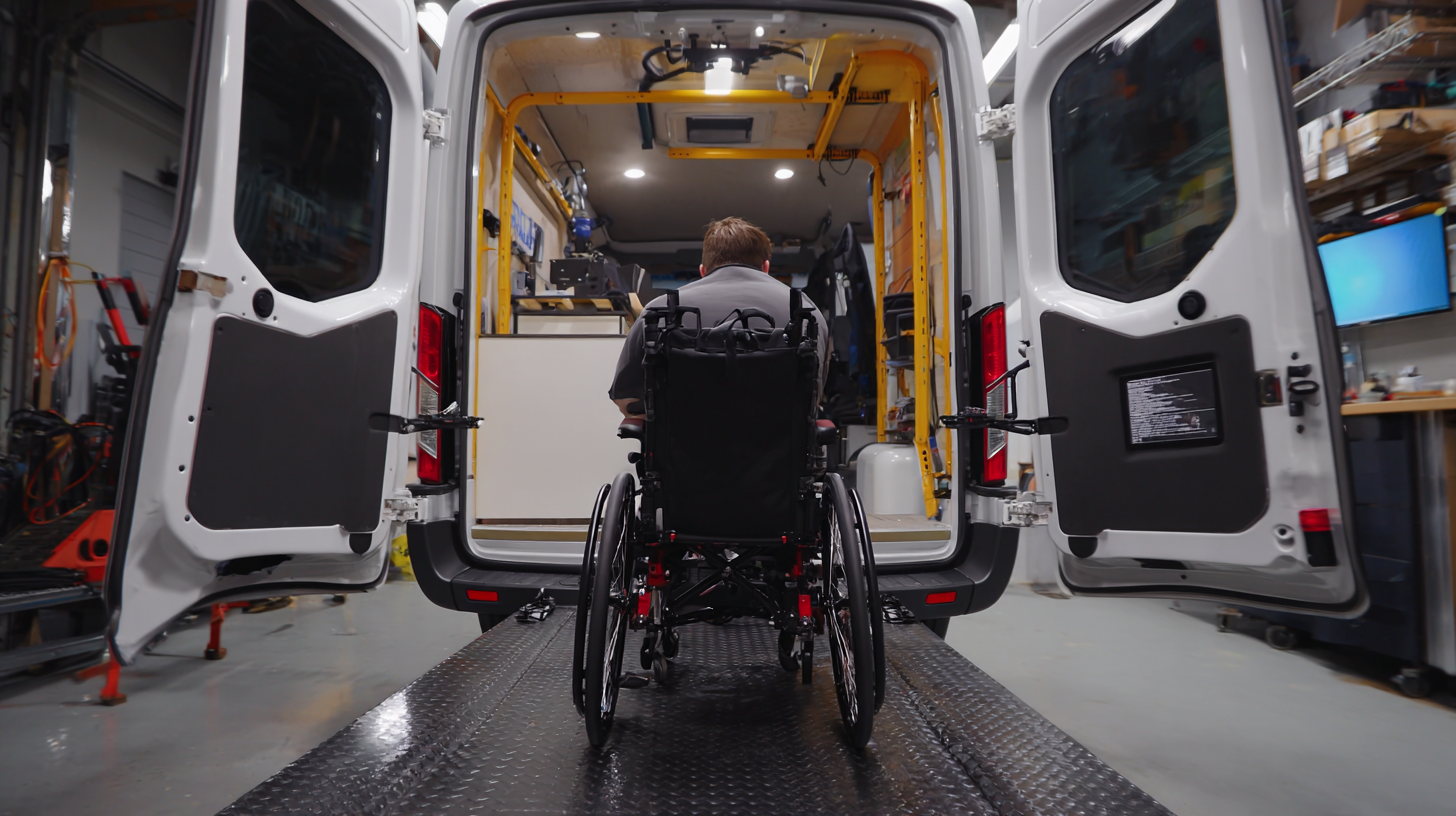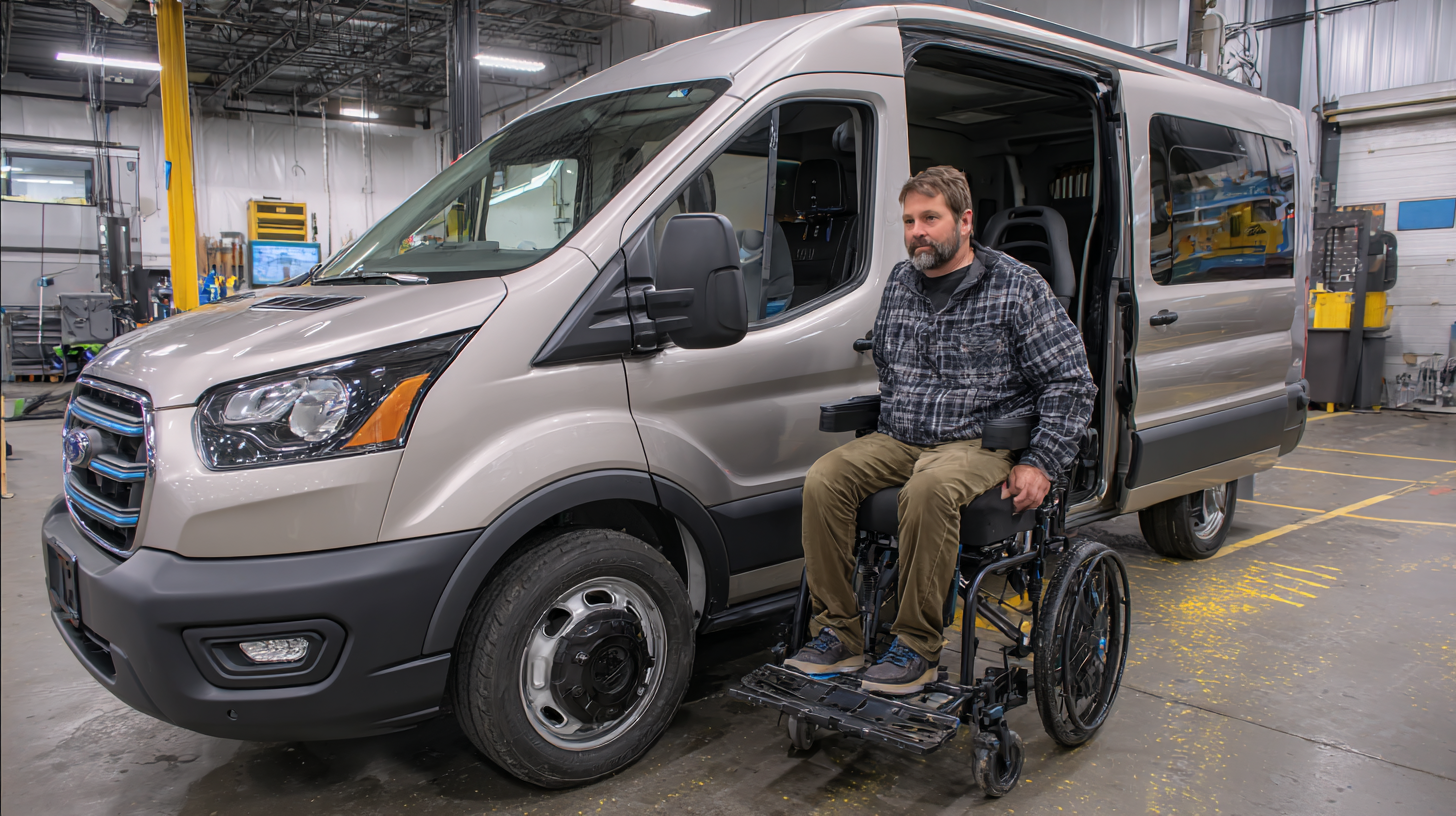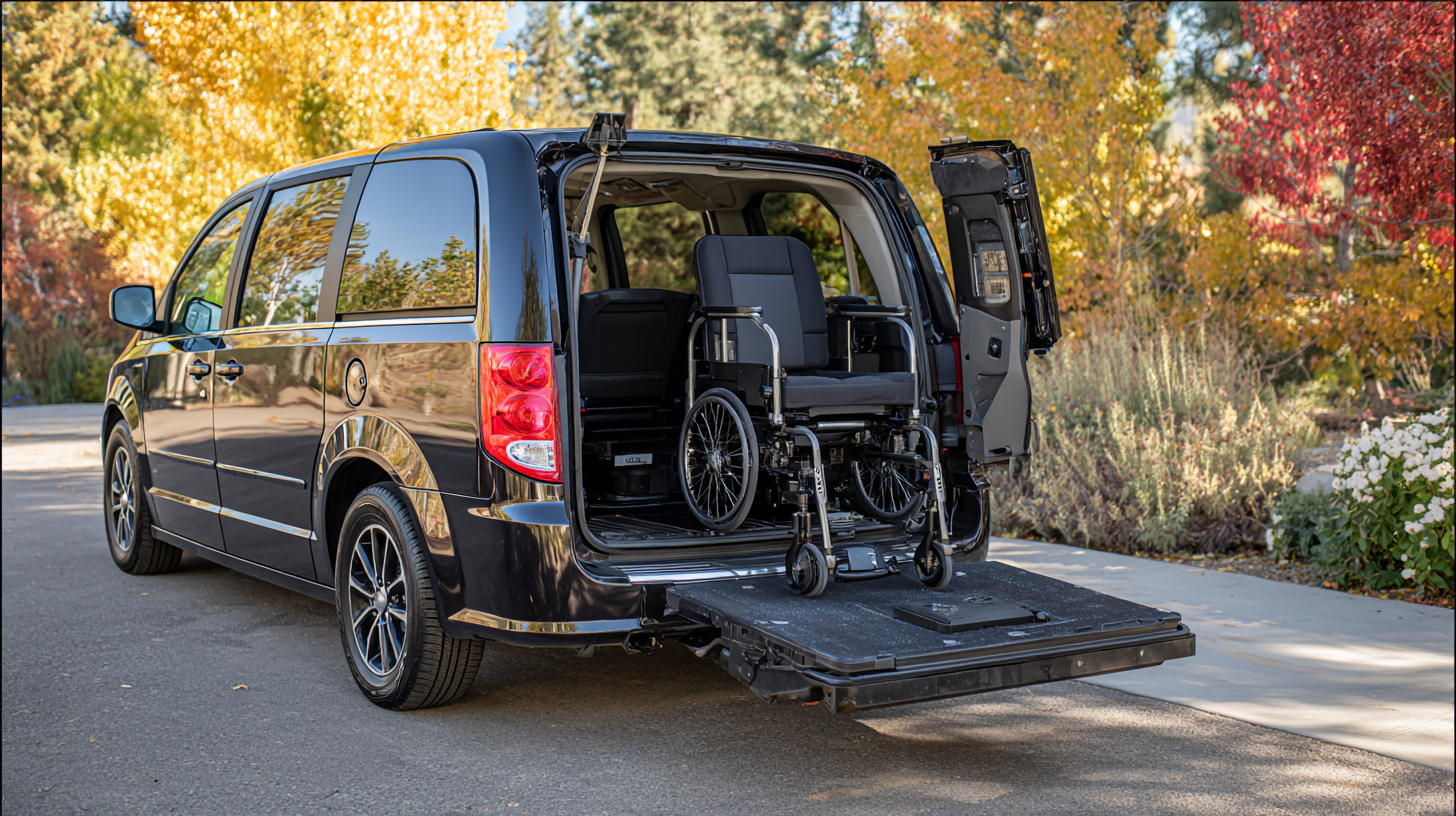Exploring the Future of Mobility: How Wheelchair Vans are Revolutionizing Accessibility
The future of mobility is being reshaped by innovations that prioritize accessibility, particularly for individuals with disabilities. One of the most significant advancements in this realm is the development of wheelchair vans, which are designed to provide greater independence and freedom of movement. According to a report by the National Highway Traffic Safety Administration, approximately 7 million Americans rely on wheelchairs for mobility, underscoring the necessity for accessible transportation options. With the market for wheelchair vans expected to grow significantly, driven by advancements in technology and a heightened awareness of inclusive design, it's vital to explore how these vehicles are revolutionizing access to public spaces and enhancing the quality of life for users. As we delve into this subject, we will examine the features and benefits of wheelchair vans, highlighting how they are not just vehicles, but essential tools for empowerment and integration in society.

The Rise of Wheelchair Vans: A New Era for Accessible Transportation
The rise of wheelchair vans marks a transformative shift in accessible transportation, significantly improving the mobility of individuals with disabilities. According to a 2022 report from the National Center for Health Statistics, approximately 7.3 million Americans rely on wheelchairs for mobility, representing a growing demand for specialized transport solutions. Wheelchair vans have evolved to incorporate advanced technology, enhanced safety features, and user-friendly designs, making them an essential resource for promoting independence and social inclusion.
To maximize the benefits of wheelchair vans, consider these tips: First, explore various financing options available for purchasing or renting wheelchair-accessible vehicles, as many organizations offer grants or subsidies to assist with these costs. Additionally, regular maintenance checks are crucial to ensure the vehicle's wheelchair lift and safety systems are in optimal condition, ensuring reliable transportation. Finally, familiarize yourself with local regulations and resources available for accessible transportation in your area to better navigate the options suited to your needs.
The ongoing innovation in wheelchair van designs, such as improved fuel efficiency and sustainability initiatives, signals a promising future for accessible transportation. As industry experts project a market growth rate of over 5% annually through the next decade, it is clear that the integration of wheelchair vans into everyday life is not just a trend, but a fundamental change in how we approach mobility for everyone.
Exploring the Future of Mobility: The Rise of Wheelchair Vans
This chart illustrates the increasing number of wheelchair vans in use over the past decade, reflecting the growing demand for accessible transportation solutions.
Key Features of Modern Wheelchair Vans Enhancing User Experience
Modern wheelchair vans are transforming the landscape of mobility and accessibility, offering essential features that significantly enhance user experience. According to the National Institute on Disability, Independent Living, and Rehabilitation Research (NIDILRR), around 8 million Americans rely on wheelchairs for mobility, emphasizing the need for efficient transportation solutions. Contemporary wheelchair vans are designed with advanced ramp systems, such as in-floor ramps and power-operated lifts, which simplify entry and exit. These innovations not only facilitate easier access for users but also improve safety, minimizing the risk of accidents during transfers.
In addition to improved architectural design, modern wheelchair vans are equipped with user-friendly technology that caters to diverse needs. Reports indicate that smart control systems allow drivers to adjust seating and wheelchair securement configurations with ease, enhancing comfort for both the user and their caregivers. Furthermore, many vans now include adaptive driving features, such as hand controls and extra space for personal mobility devices, which empower users to maintain independence and confidence while on the road. With these advancements, wheelchair vans are not just vehicles; they are essential tools in fostering an inclusive society that prioritizes accessibility for all.
Exploring the Future of Mobility: How Wheelchair Vans are Revolutionizing Accessibility - Key Features of Modern Wheelchair Vans Enhancing User Experience
| Feature |
Description |
Benefits |
| Ramp System |
Automated or manual ramps for easy access |
Increased independence and reduced strain |
| Securement Systems |
Integrated wheelchair tie-downs and safety belts |
Enhanced safety during travel |
| Spacious Interior |
Ample room for passengers and wheelchairs |
Comfort during rides and easier maneuverability |
| Smart Technology |
Features like GPS, Bluetooth, and onboard diagnostics |
Improved navigation and communication |
| Customizable Options |
Variety of seating arrangements and adaptive technologies |
Personalized comfort and usability |
| Fuel Efficiency |
Engine designs focused on better mileage |
Lower operating costs for users |
How Technology is Driving Innovations in Accessible Mobility Solutions
 The landscape of accessible mobility is undergoing a seismic shift, driven primarily by rapid technological advancements. According to a report from the National Mobility Equipment Dealers Association (NMEDA), the wheelchair accessible vehicle market is expected to grow by over 15% over the next five years. This growth is largely fueled by innovations in vehicle design and smart technology, making it easier for individuals with disabilities to travel independently and with dignity.
The landscape of accessible mobility is undergoing a seismic shift, driven primarily by rapid technological advancements. According to a report from the National Mobility Equipment Dealers Association (NMEDA), the wheelchair accessible vehicle market is expected to grow by over 15% over the next five years. This growth is largely fueled by innovations in vehicle design and smart technology, making it easier for individuals with disabilities to travel independently and with dignity.
Recent innovations include the integration of advanced navigation systems and user-friendly interfaces designed specifically for wheelchair users. A 2022 survey by the Centers for Disease Control and Prevention (CDC) highlighted that 53 million adults in the United States live with some form of disability, pointing to an urgent need for more accessible transportation solutions. Wearable technology is also emerging, allowing users to communicate their needs seamlessly with vehicle systems, leading to a more personalized travel experience. As technology continues to evolve, the future of mobility promises to be more inclusive, ensuring that accessibility is at the forefront of transportation innovations.
Real-Life Success Stories: Transforming Lives with Wheelchair Vans
The impact of wheelchair vans on accessibility is exemplified through various real-life success stories that highlight the transformative power of mobility solutions. For instance, individuals with limited mobility can now enjoy greater independence and quality of life, breaking free from the constraints that once held them back. These stories often feature individuals who faced significant challenges in accessing transportation and how the introduction of wheelchair vans not only facilitated travel but also fostered socio-economic opportunities previously considered unattainable.
Moreover, the integration of advanced technologies in the transportation sector, such as AI, further enhances the benefits brought by these specialized vehicles. Real-time route optimization and predictive maintenance not only ensure reliable service for wheelchair van users but also contribute to a more effective and responsive transport network. As innovation continues to shape the future of mobility, the combination of adaptive transportation solutions and cutting-edge technology holds the promise of continued improvements in accessibility for individuals with disabilities, ultimately transforming lives and communities.
Future Trends in Wheelchair Van Design and Mobility Accessibility
The future of wheelchair van design is evolving rapidly, driven by technological advancements and a growing awareness of accessibility needs. With the global vehicle conversion market projected to expand significantly, reaching $63.49 billion by 2030, manufacturers are able to innovate and enhance their offerings for mobility-challenged individuals. This trend emphasizes not only improved vehicle functionality but also integrated solutions that prioritize user experience. As the industry moves towards electrification and software-defined vehicles, wheelchair vans are being equipped with smarter features that enhance safety and comfort on the road.

Moreover, the transformation in the mobility sector highlights the critical importance of shared autonomous vehicles. These self-driving options are already making headway in numerous urban environments, providing improved access to transportation for those with disabilities. The integration of accessible design in this emerging landscape is essential to ensure that every individual can benefit from these advancements. As the conversation around sustainable mobility continues, it’s clear that the future of wheelchair vans and accessible transportation is intertwined with broader efforts to create inclusive communities.